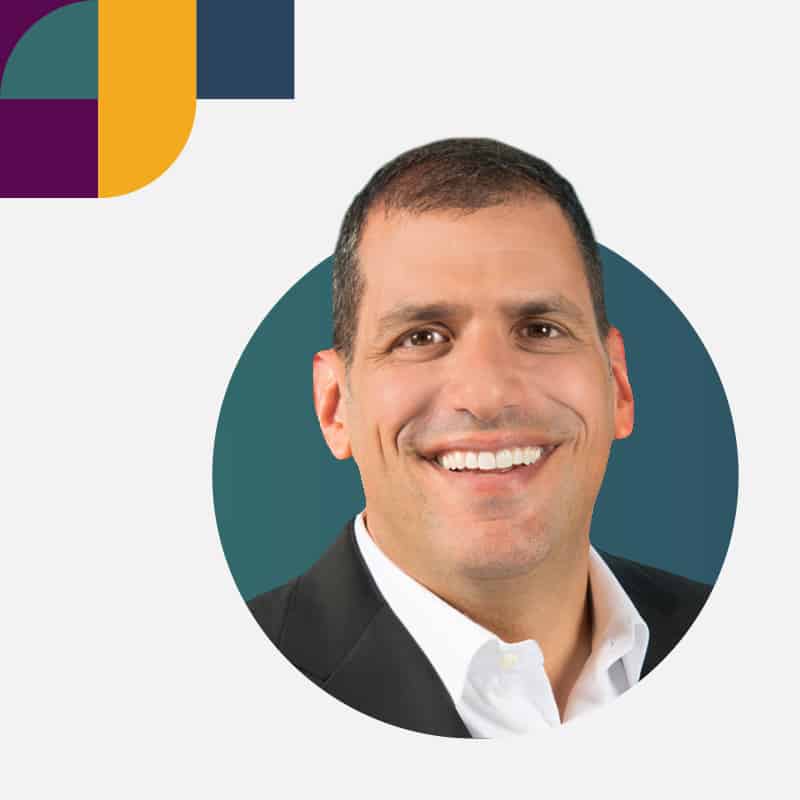We’re at an inflection point in how we use people data — and the decisions you make will spell out success or failure for your organization.
That’s why Paul Rubenstein, chief people officer at Visier, is a fierce advocate for using people analytics to drive business transformation. “There’s a world where there’ll be winners and losers, managers and organizations who really harness the power of data about people and understand that people data is business data,” Rubenstein says. “They will outperform those companies who rely only on inertia and tradition.”
Rubenstein is sharing his perspective on people analytics during our EmpowerHR virtual summit. Ahead of the event, we caught up with Rubenstein to learn more about the future of HR data analytics.
“There’s a world where there’ll be winners and losers, managers and organizations who really harness the power of data about people and understand that people data is business data.”
— Paul Rubenstein, Chief People Officer, Visier
Align yourself with the business
The first step to using HR data most effectively is to prioritize what’s most important to the business. “What HR thinks is interesting to the business isn’t always true,” Rubenstein says. “You really have to have an outside-in lens.”
The initiatives HR traditionally invests in won’t enable transformation. “HR has to understand how it’s spending its time and money,” Rubenstein says. “You will not get greatness out of process efficiency, and your HRIS is not going to take you to the next level of people insights — and there’s a diminishing return to the amount of money you spend on it.”
So what should HR focus on to support effective business transformation? “It’s the new sets of data and the new sets of information — skills, sentiment, network. … Those are the things that HR needs to shift and start investing in,” Rubenstein says.
“You will not get greatness out of process efficiency, and your HRIS is not going to take you to the next level of people insights — and there’s diminishing return to the amount of money you spend on it.”
— Paul Rubenstein
Give power — and data — to the people
One of HR’s most aspirational goals, Rubenstein says, is to eliminate the need for the function. “A long time ago,” he says, “I had a boss who told me the goal of HR is to help everybody make such good people decisions that HR is no longer needed.”
For HR leaders to achieve their highest goals, they must empower leaders, managers, and employees to make the best possible decisions — and that requires data. Unfortunately, too many organizations don’t give everyone access to the same data.
“HR data is business data,” Rubenstein says, and these critical datasets can’t deliver full value while they’re locked up in your HRIS. “You can’t be the shepherd, steward, or gatekeeper of this data,” he continues. “Why would you handcuff your managers from making the best business decisions, especially when it comes to people?”
The business is better off when HR business partners stop gatekeeping data and start using it — and so is HR. This fundamental shift, however, “has implications for how HR is structured and what the delivery model is,” Rubenstein says. HR teams of the future will need a new skill set: knowing how to manage, interpret, and distribute data to the right people at the right times.
Share something, teach something
Communicating data to people in the field — leaders, managers, and individual workers — is one of HR’s greatest strategic challenges. But teaching stakeholders how to use that data could be an even greater challenge. “So the question is,” Rubenstein says, “how do you use data, analytics, stories, a mirror to a set of decisions?”
HR teams of the future will need a new skill set: knowing how to manage, interpret, and distribute data to the right people at the right times.
HR’s next evolution will be moving past dashboards to deliver repeatable actions downstream in the workforce. “The next realization of value in HR isn’t actually the creation of insights,” Rubenstein says. “It’s showing people what to do with them.”
Business transformation may start inside HR, but it can’t stay there. “You need to be able to make lots of small decisions that are distributed outside HR in order to get a talent outcome that changes business outcomes,” Rubenstein says. Those outcomes depend on having an informed, educated workforce that understands how to use data in their decision-making.
“The challenge is figuring out what is signal and what is noise, and understanding that the data is there to enhance, confirm, and direct your instincts,” Rubenstein says. Think of this like driving a car: We know what to do instinctually, but we still use data-based tools to account for traffic and find the best path forward. In the workplace, HR might coach managers to use data to discover “who that quiet quitter might be, or who the person really struggling is.”
Going forward, HR’s role will evolve from democratizing data access to showing people how to apply insights in the flow of work — and make better decisions for people and the business.
Power to HR at Empower HR



